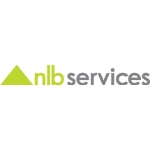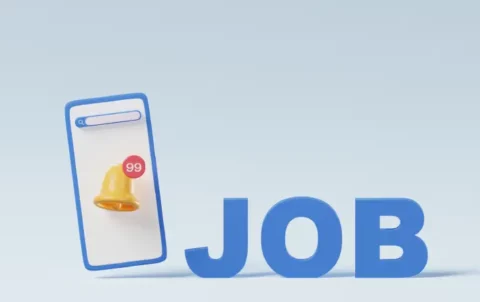© 2025 Next Level Business Services Inc. All Rights Reserved.
The importance of body language during an interview
By NLB Services
With much dedication and perseverance, you crack the interview you have been waiting for. Take a sigh of relief, but don’t get too complacent. No matter how remarkable your resume may be, leaving a lasting impression goes way beyond impressive credentials and high accolades. How you present yourself during an interview speaks volumes of your personality, and interviewers are trained to assess those nonverbal cues as well as verbal messages when reviewing applicants. Believe it or not, your body language during an interview can either make or break your chances of landing your dream job – which mandates the need for prospective employees to hone their body language skills, to ramp up their chances of getting the job they’ve been vying for.
Understanding body language during interviews
Body language boils down to nonverbal communication forms that entail the use of gestures, facial expressions, eye contact, tone of voice, and other common physical movements one may not even think about. It may be conscious or unconscious or may even support or contradict verbal messages. These nonverbal signs are transcendental across languages and cultures, so regardless of who witnesses it, they will more or less understand and interpret it alike, rendering it to be rather impactful in leaving a lasting impression.
“Research on body language reveals that we can change other people’s perceptions and perhaps even our own body chemistry- simply by changing body positions”, suggests social psychologist, author, and professor at Harvard Business School, Amy Cuddy. In another research, it was shown that facial expressions can impact a candidate’s perceived likability, competence, and suitability for a job. It’s rather common to have jitters before your job interview, but regardless of how nervous or anxious you may be, having a straight yet relaxed posture, and maintaining a smile with strong eye contact can exude confidence and competence at your end, and make all the difference in how well your interview goes.
Because good body language during an interview can be so telling of one’s personality, and interviewers are definitely paying attention – with our tips and guidelines below, you can be well on your way to identifying and refining these cues, using them to your advantage and showcasing your best professional self.
1) Maintain eye contact
One of the most common mistakes job seekers make is avoiding steady eye contact with the interviewer. Actively seeking consistent eye contact while speaking is essential, as it enables rapport building, establishes trust, and communicates sincerity at the interviewee’s end. People who avoid eye contact run the risk of coming across as either too shy or anxious or worse, dishonest and unreliable, notes body language expert, Lillian Glass, in her book “The Body Language Advantage”.
Quantified Analytics, a commutations-analytics company, concluded that at large people only maintain eye contact 30-60 percent of the time when speaking, whereas they should be aiming for somewhere between 60-70 percent to evoke an emotional connection and develop relationships. So do yourself a favor next time you’re appearing for an interview, and make that eye contact. Remember the key is to always know how much is too much, as unwavering eye contact will be mistaken for staring and can make your interviewer uncomfortable or even signal rudeness or domination. As a rule of thumb, maintain eye contact for about 4-5 seconds before looking away, and re-establishing it again.
2) Open body posture
Your prior job experience and academic achievements can speak volumes of your intelligence, but have you ever wondered what message is your slouching sending across? Definitely, not a favorable one.
In an experiment conducted by Harvard Business School, candidates who held high power poses (i.e., expansive and open body postures) just before an interview reportedly performed and felt better during their assessment. Those who indulged in preparatory high-power posing received greater overall performance evaluation in comparison to low-power posers (i.e., contractive and closed body postures) as they seemed to be more assertive, exude greater confidence, and deliver more captivating presentations. Interestingly, high-power posers also reported lower stress levels than their counterparts. Preparatory power posing is a simple, free tool that can be used by almost anyone just before their interview to make a world of difference in how they present themselves.
In tandem with this, job seekers should avoid crossing their arms and legs or exhibiting any restrictive body postures as it renders them looking rather unapproachable. Instead, relax your shoulders and slightly lean in when the interviewer asks you a question as it’s an expression of interest and keenness in what one has to say.
Read our full guide – How to prepare for a job interview
3) Controlled hand gestures
What you do with your hands during the interview may be just as important as what you say. Hand gestures are mostly unconscious but refrain from making any exaggerated hand movements or fidgeting too much as it not only distracts the interviewer but is also a sign of nervousness.
On the contrary, controlled hand movements while talking can help emphasize what you are saying. Specifically focus on communicating with open palms, as historically this gesture has been associated with increased openness, honesty, and dependability. It may also persuade the listener to be more receptive to what you have to offer, but be sure to keep your shoulders upright, as open palms with slouching shoulders can make you look helpless or even unreliable and hesitant.
Keep away from communicating with palms facing downward as it signifies authority and dominance which might just be counterproductive in your situation. When in any doubt, just lay your hands in your lap in a neutral position or rest it on a desk in front of you, if that feels more comfortable.
4) Facial expressions
A smile can be your greatest asset as it conveys approachability and warmth but not at the expense of you coming off as unprofessional. Strictly stray away from grinning ear to ear and strike a perfect balance by smiling in parts where deemed to be appropriate. Research in this field suggests that smiling particularly in the beginning and towards the end of the interview may reap the most benefits.
Nodding may also be appropriate at times as it is indicative of attentiveness and engagement. When an interviewer is speaking, nodding demonstrates that the candidate is listening and signals a willingness to collaborate and learn.
Overall, just pass up from excessively frowning, pursing your lips, or yawning which can leave you looking unprofessional or plain disinterested. By and large, aim to keep your expressions in line with the issues being discussed, for instance, if your interviewer is discussing a serious issue you’d be better off keeping your expressions on the neutral side.
5) Enter and Exist strong
Most recruiters take note of how you enter and exit the interview room. Upon entering, walk in with a smile and warmly greet everyone in the room with a firm handshake. Before sitting, seek their permission and sit with your back straight.
Whether your interview goes as planned or not, always leave the room on a positive note, the last thing you want is to be looking dejected as you leave. As you stand back up, put your chair back in place, smile and extend your appreciation for everyone’s time and walk out with ease, keeping your body posture relaxed.
Summing it up…
When it comes to job interviews, first impressions are quite unforgiving – and your nonverbal cues greatly influence the impression you convey. When gearing up for a successful interview, prepare to become comfortable with the entire process and strive to showcase yourself as respectful, interested, and eager at all times. With practice, you can use these nonverbal signs to convey just the right message and make things turn around in your favor. Ease your nerves and be confident and cognizant of your body language during the interview, and let your skills and talent shine through.
Talent Solutions








